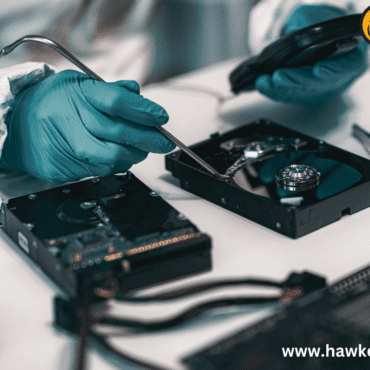Mobile Forensics: Extracting Hidden Data from Android and iOS
Smartphones have become the center of our digital lives, holding everything from personal photos and financial transactions to confidential business communications. While these devices offer convenience, they also play a critical role in criminal investigations and digital forensics. Mobile forensics is the science of retrieving, analyzing, and preserving digital evidence from mobile devices like Android and iOS smartphones.
This blog explores how investigators extract hidden data, the types of information that can be recovered, tools and techniques used, real-world applications, and the challenges involved in mobile forensic investigations.
Extracting Hidden Data from Android and iOS
When data is deleted from a phone, it doesn’t always vanish immediately. Instead, it often remains in the device’s memory until overwritten. Mobile forensics leverages advanced forensic tools and techniques to access this hidden or residual data.
-
From Android devices: Investigators can access deleted texts, call logs, WhatsApp messages, browsing history, and app data even if they’ve been erased from the user interface. Rooting and custom recovery modes can sometimes provide deeper access.
-
From iOS devices: Apple’s strong encryption makes extraction more complex, but experts use methods like logical acquisition, file system acquisition, and iCloud data recovery to retrieve deleted messages, photos, and application data.
Forensic specialists follow strict legal and scientific procedures to ensure the recovered data remains admissible in court.
Types of Data Recovered in Mobile Forensics
Mobile devices store a wide variety of data that can serve as critical evidence:
-
Call Records & SMS – Logs of dialed, received, and missed calls, along with text messages.
-
Chat Applications – WhatsApp, Telegram, Signal, and other app data including deleted messages.
-
Multimedia Files – Photos, videos, voice notes, and hidden media from cache folders.
-
Location Data – GPS history, Wi-Fi connections, and cell tower logs that trace movements.
-
Internet & Social Media History – Browser history, cookies, bookmarks, and social media activity.
-
Emails & Attachments – Sent, received, and deleted emails with metadata.
-
Documents & Files – PDFs, Word documents, and downloads from messaging apps or browsers.
-
System Files & Logs – Background data that reveals hidden activity.
This wide spectrum of recoverable data makes mobile forensics invaluable in both criminal and corporate investigations.
Key Tools and Techniques in Mobile Forensics
Forensic experts rely on specialized tools and methodologies to extract and analyze mobile data securely:
Tools:
Techniques:
Use of Mobile Forensics in Real-World Investigations
Mobile forensic techniques are applied across diverse scenarios:
-
Criminal Investigations – Police use mobile data to uncover hidden evidence in cases of fraud, theft, terrorism, and cybercrime.
-
Corporate Security – Companies investigate employee misconduct, intellectual property theft, or insider threats using forensic techniques.
-
Accident and Emergency Cases – Location data helps reconstruct events before road accidents or disasters.
-
Family Disputes & Civil Cases – Extracted chats, emails, or call records can serve as evidence in divorce or custody battles.
-
National Security – Intelligence agencies use mobile forensic methods to track suspects and prevent threats.
Challenges in Mobile Device Forensics
While powerful, mobile forensics faces several challenges:
-
Encryption and Security Updates – Strong device encryption and frequent OS updates make data extraction increasingly difficult.
-
App Diversity – Thousands of apps store data differently, complicating forensic processes.
-
Cloud Storage – Critical data may be stored in the cloud, outside the device’s physical reach.
-
Device Lockouts – PINs, passwords, and biometric locks pose barriers to investigators.
-
Data Volatility – Mobile devices overwrite deleted files quickly, reducing chances of recovery.
-
Legal and Privacy Issues – Investigations must comply with strict laws to ensure data is admissible in court.
Conclusion
Mobile forensics is a cornerstone of modern digital investigations, enabling the recovery of hidden and deleted data from Android and iOS devices. From recovering deleted WhatsApp chats to analyzing GPS trails, mobile forensics provides insights that are often critical for solving criminal cases, corporate disputes, and personal matters.
Despite challenges such as encryption, app diversity, and privacy concerns, forensic experts continue to evolve their tools and techniques to keep pace with technological advancements. As smartphones remain central to our lives, mobile forensics will only grow in importance, bridging the gap between digital evidence and justice.





Post comments (0)